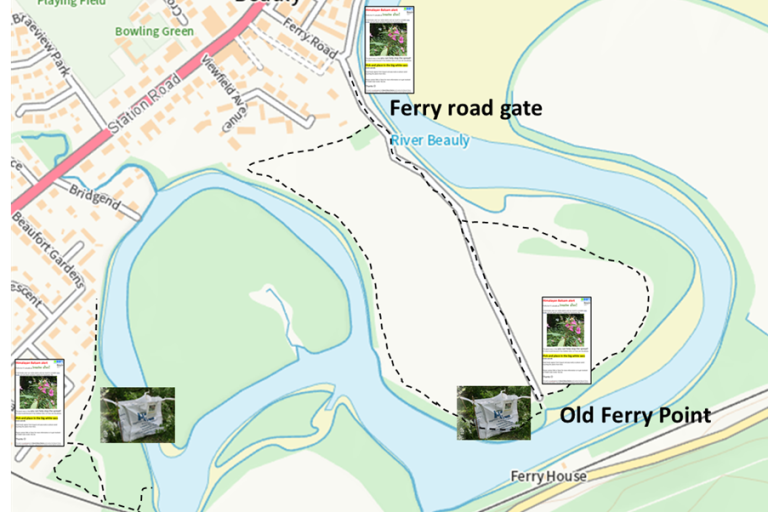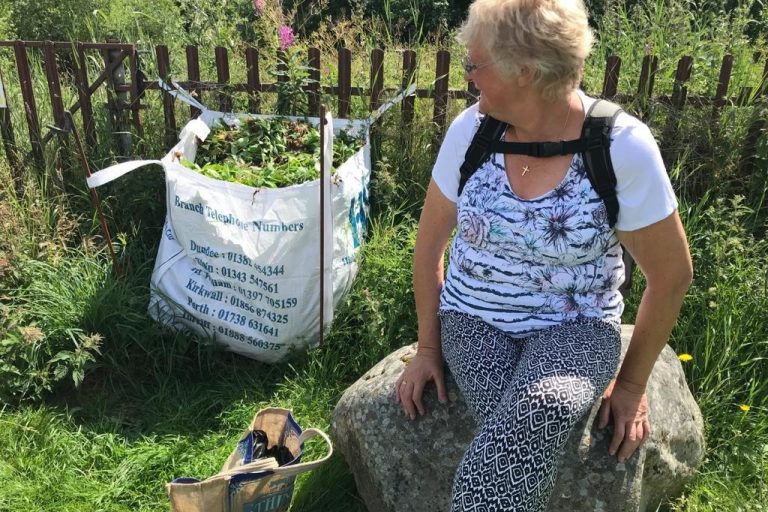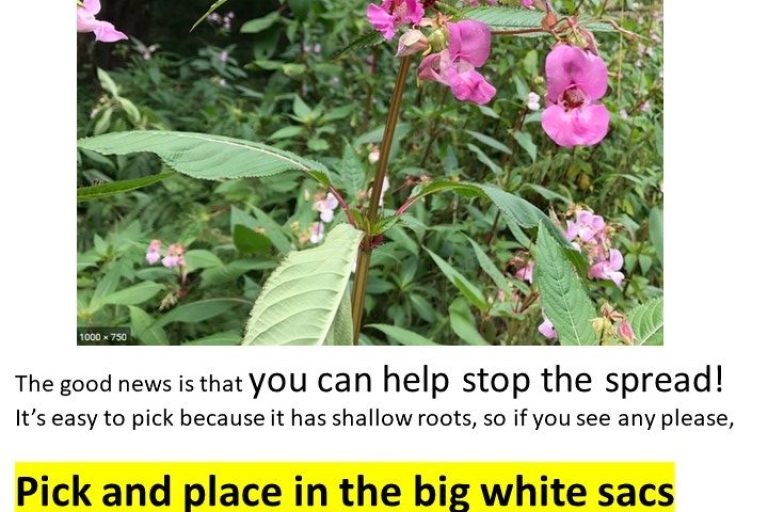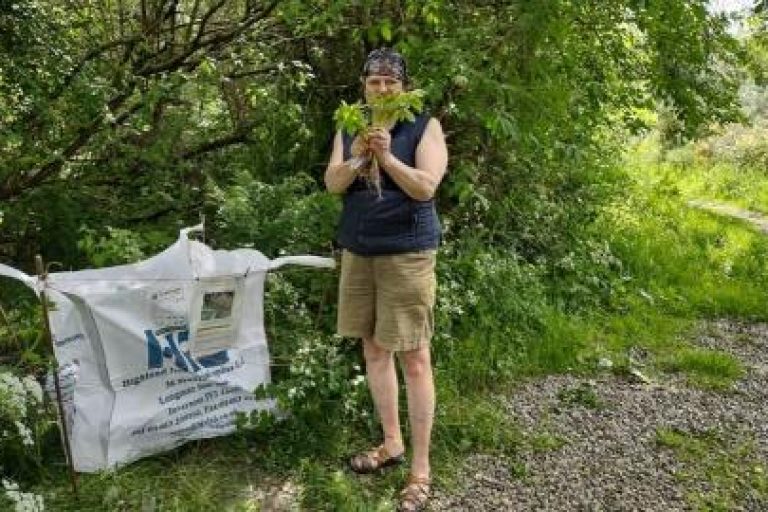Summary
This case study looks at the project set up in Beauly to encourage the public to get involved with impromptu Himalayan balsam pulling while out and about on walks. Informative signage and a series of large sacks (to collect pulled balsam stems) were used to inspire and support local people to take action. In its first year the scheme was successful in raising awareness and resulted in people getting involved and pulling Himalayan balsam stems from the control area.
The project is running alongside a programme of co-ordinated Himalayan balsam removal at priority sites in the Beauly catchment which is managed by the Beauly Fishery Board and part of the Scottish Invasive Species Initiative. The aim is that public engagement like this will have an important role in a year or two when the balsam sites have been initially cleared. At that stage the public effort of ad hoc pulling will be essential to remove any remaining small amounts growth from the riverbanks and protect the cleared areas.
Background
To tackle the Himalayan balsam problem on the Lower River Beauly catchment the Beauly Fishery Board, a delivery partner in the Scottish Invasive Species Initiative, initiated a project in early 2021 to work with the local land manager, Lovat Estates, and support local volunteers to take action. They set up a community action group – the Beauly Balsam Bashers – who tackled priority sites and removed balsam (see Beauly Balsam Bashers case study for more information) from priority locations.
To further raise awareness about Himalayan balsam and engage and encourage more local people to get involved the partnership prepared ‘join in’ project signs and set up a number of collecting bags to encourage passers-by and dog walkers to pull a bit of balsam while out on their walk.
Action taken
The areas identified for the community project were the riverside footpaths in Beauly around the Old Ferry Point and the Green Bridge (see Figure 1.) This area contained two priority action sites identified for control by the Beauly Fishery Board and, as it runs along the edge of the town, is a popular well-used route.




